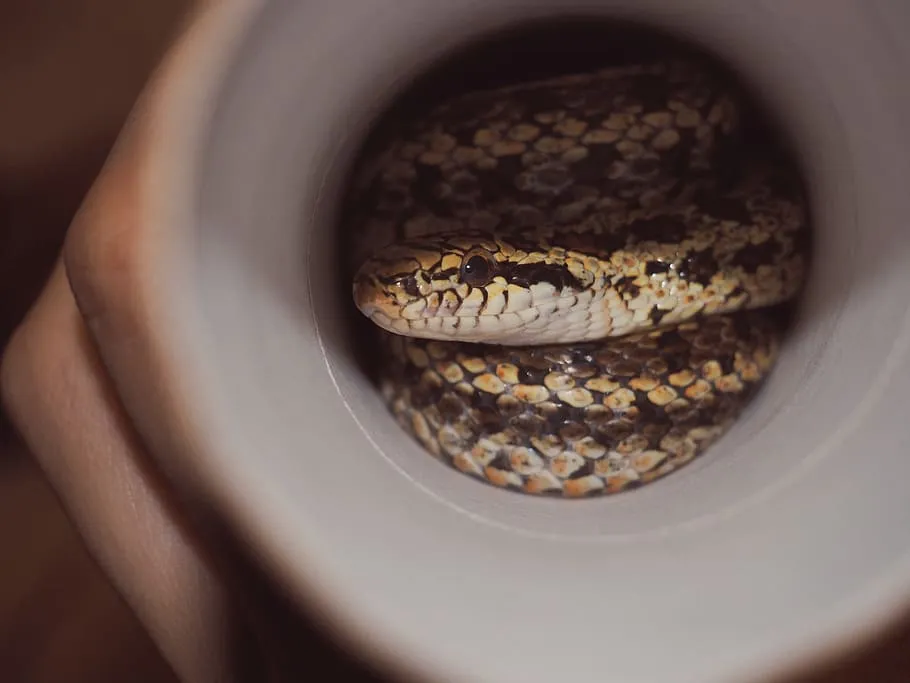Stepping out of my house about two days ago, a little time before noon when the sun would be directly overhead, the first thing that greeted me was a snake running into the safety of the bush around. I got stuck for a few seconds looking around for any weapon I could lay my hands on but all to no avail. What did the earth colour snake say to the god of death? Not today.
We are gradually approaching the harmattan/dry season as far as the Nigerian climate is concerned. The season is usually characterized by extreme dry cold on one hand and high temperature on the other hand. The combination of extreme cold during the night and high temperature during the day is a perfect recipe for snake breeding.
Why did I say extreme cold and heat is a perfect recipe for snake breeding? It is because snakes belong to a group of vertebrates known as poikilotherms. Poikilothermic animals are also known as cold-blooded animals. The temperature of their bodies varies with that of the environment, unlike homoiothermic animals who have a relatively stable body temperature irrespective of the temperature of the environment.
The body of mammals is generally designed to function within a certain range of physiological conditions. Beyond this range, organisms risk irreversible damages to their body systems or even death in some cases. Thus, snakes try to avoid extreme environmental conditions as far as their body temperature is concerned.

When the environment gets too hot, their body temperature may get too high above the set point. In this case, snakes will try as much as possible to look for areas within the environment that is not as hot as the rest to pitch their tents. On the other hand, when the environment gets too cold, snakes will try to avoid their body temperature getting below the setpoint by looking for areas within the environment that is not as cold as the rest.
Hence, in the harmattan/dry season where the nights are extremely cold and days are extremely hot, snakes will normally come out from their hiding early in the morning once the sun comes out to prevent the temperature of their body from dropping beyond the limits permissible by biology. Once the sun becomes too hot, the reptiles will start looking for areas that are not as hot as most of the environment to lay their heads.
Ipso facto, it is not uncommon to see snakes in a variety of places during this period. Watch out for these dangerous creatures during the early sun and when the temperature peaks for the day. They will usually be seen in open spaces in the early sun because they will want to soak in the heat that the sun has to offer. At the peak of the heat, they have been found in house crevices, bathrooms, toilet basins, in houses, etc.
What to do when you see snakes
In this part of the world, except in a few places, the default reaction to seeing a snake all of a sudden is fear and this is quite normal considering cases of snake bites that have been witnessed or experienced by many. One thing that we need to know is that the snakes are probably more afraid than you and this is why their default reaction when they see humans is to run into hiding.
Snakes ordinarily will not attack anyone except they have got no option. Their attack is a form of defense. I have heard of a household that lived with snakes for months without knowing. Hence, when you see a snake, the best thing to do is to just give it time to run into safety unless it is within the house, then I will recommend doing the utmost to get rid of it. There are several antisnake pesticides in the market that one can use to fumigate the surroundings of the house.
In case of snake bites
Not all snakes are poisonous. However, there might be no time or expertise to know that a particular snakebite is poisonous or otherwise. Hence, once an incidence of snakebite occurs, the best thing to do is to seek medical help as soon as possible.
Before going to the hospital, however, some first aid actions should be observed depending on the part of the body where the bite occurs. If it is part of the body below the heart, efforts should be made to limit blood flow from the bite area to the heart. This can be achieved by tieing a piece of soft cloth just above the area (assuming it is the leg or hand) and asking the victim to stand upright for as much as possible until they get to the hospital.
Apart from tieing clothes, the injured area can be incised using a razor blade and pressed in order to allow toxic blood to flow out. Relevant herbs or activated carbon in the form of charcoal can also be added to the area. Activated charcoal functions by absorbing toxins from its environment.
If the snake bite occurs on the parts of the body above the heart, the best thing to do is to rush to the hospital as fast as possible while holding the area tightly as much as possible as it might be next to impossible to tie any cloth.
Thank you all for reading.
